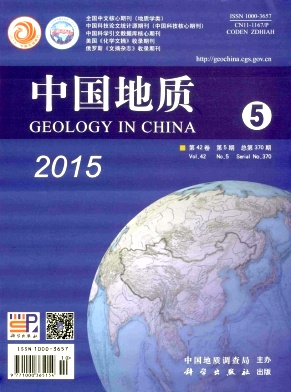HUANG Zhu1,2, YANG Jing-sui1, ZHU Yong-wang3, XIONG Fa-hui1, LIU Zhao4, ZHANG Zhong-ming1. The discovery of diamonds and deep mantle minerals in chromitites of Hegenshan ophiolite, Inner Mongolia[J]. Geology in China, 2015, 42(5): 1493-1514.
| Citation: |
HUANG Zhu1,2, YANG Jing-sui1, ZHU Yong-wang3, XIONG Fa-hui1, LIU Zhao4, ZHANG Zhong-ming1. The discovery of diamonds and deep mantle minerals in chromitites of Hegenshan ophiolite, Inner Mongolia[J]. Geology in China, 2015, 42(5): 1493-1514.
|
The discovery of diamonds and deep mantle minerals in chromitites of Hegenshan ophiolite, Inner Mongolia
-
1. CARMA, State Key Laboratory of Continental Tectonics and Dynamics, Institute of Geology, Chinese Academy of Geological Sciences, Beijing 100037, China; 2. China University of Geosciences, Beijing 100083, China; 3. Inner Mongolia No. 9 Institute of Geology and Mineral Exploration and Development, Xilin Hot 026000, Inner Mongolia, China; 4. Institute of Mineral Resources, Chinese Academy of Geological Sciences, Beijing 100037, China
-
Abstract
Abstract: Diamond and other deep mantle minerals, previously found in the Mesozonic Tibet and the early Paleozoic Polar Ural, Russia, are now found in ophiolite mantle peridotite chromite. Hence the traditional opinion holding shallow origin of ophiolite and chromite should be reconsidered. In order to find out the distribution of diamond and other deep mantle minerals in different orogenic ophiolite chromites and to investigate the formation processes of the Hegenshan podiform chromitites, the authors carried out mineralogical study of chromitites in the Hegenshan ophiolite, Inner Mongolia. Approximately 2000 kg of mainly disseminated chromitite ore were collected from Hegenshan No. 3756 orebody. By mineral separation, preliminary studies identified more than 30 mineral species in addition to diamonds and moissanite. The other minerals include minerals of oxides, sulfides, silicates, and other compounds. This study demonstrates that the formation and tectonic setting of Hegenshan ophiolite and the chromitites deserve reevaluation.
-

-
-
Access History







 DownLoad:
DownLoad: